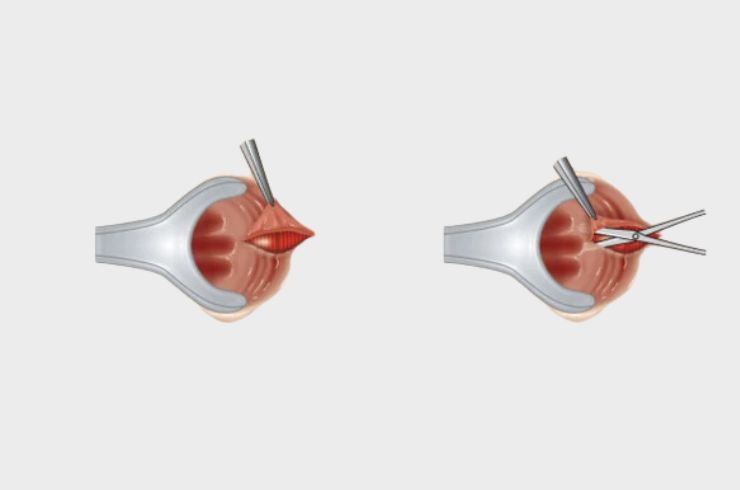Lateral Internal Sphincterotomy

Lateral Internal Sphincterotomy is a surgical procedure specifically aimed at treating chronic anal fissures, which are small tears in the lining of the anus that cause significant pain, discomfort, and sometimes bleeding during bowel movements. This procedure is highly effective in relieving the intense pain caused by spasms in the anal sphincter muscle, which often prevents fissures from healing naturally.
What is Lateral Internal Sphincterotomy?
In Lateral Internal Sphincterotomy, a small cut is made in the internal anal sphincter muscle to reduce tension and relieve muscle spasms. This helps improve blood flow to the area, allowing the fissure to heal more effectively and reducing the likelihood of recurrence. The procedure is usually performed on an outpatient basis, meaning patients can return home the same day.
How Lateral Internal Sphincterotomy Works
- Precise Incision: A small incision is made on the side of the internal anal sphincter muscle, releasing tension and stopping muscle spasms.
- Improved Blood Flow: By relaxing the sphincter, blood flow to the fissure area increases, promoting faster and more effective healing.
- Reduced Pain and Recurrence: The procedure addresses the root cause of chronic fissures, providing lasting pain relief and lowering the risk of future fissures.
Benefits of Lateral Internal Sphincterotomy
- Effective Pain Relief: Most patients experience significant pain relief within days of the procedure, allowing them to resume daily activities comfortably.
- High Success Rate: This procedure has a very high success rate for chronic anal fissures, especially those resistant to other treatments.
- Outpatient Procedure: Typically performed on an outpatient basis, patients can go home the same day, making it convenient and less disruptive to daily life.
- Lower Risk of Recurrence: By addressing the muscle tension that causes fissures, this procedure significantly reduces the risk of the fissure reoccurring.

